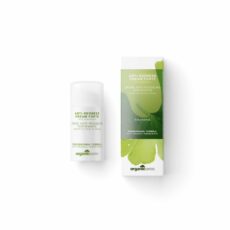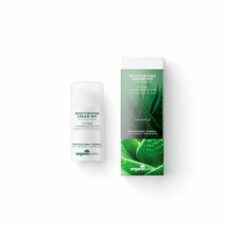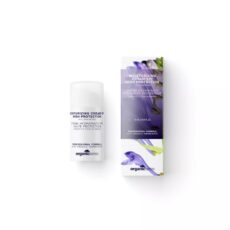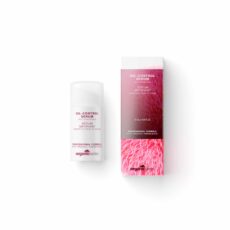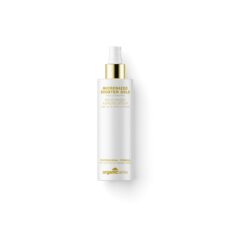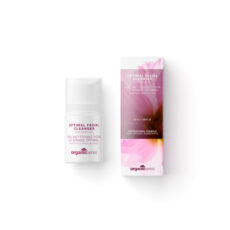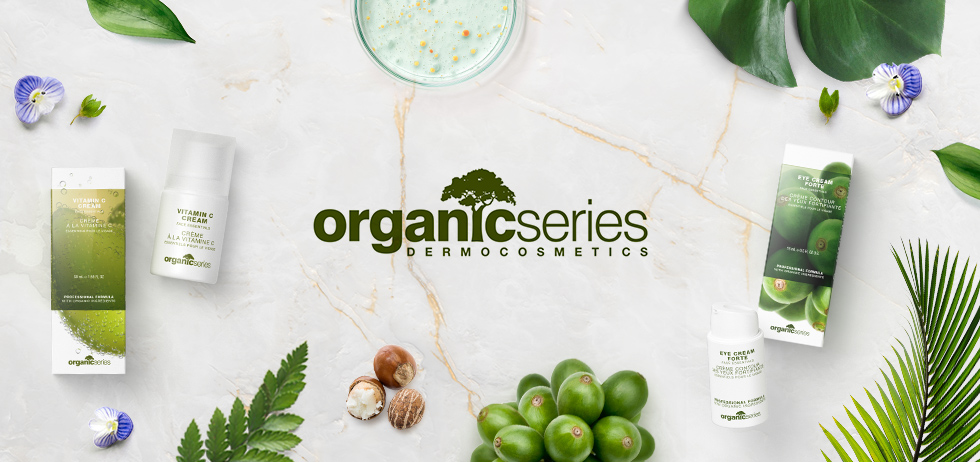What is the most common skin type?
The most common skin type is combination skin. This skin type usually has an oily T-zone (forehead, nose, chin) and dry or normal cheeks. Combination skin can be tricky to manage since you’ll need different products for your T-zone and the rest of your face. However, with proper care and the right products, combination skin can be kept balanced and healthy. It’s important to use gentle, non-irritating products that won’t strip your skin of its natural oils, so it’s best to opt for formulas specifically designed for combination skin.
Which skin type is best?

When it comes to skin types, there is no one-size-fits all answer. Everyone’s skin is different and has its own unique needs. That said, some skin types are more prone to certain conditions than others. A few of the most common skin types include normal, oily, combination, dry, sensitive and mature. The one skin type that seems to be the most desired one is the normal skin type – that’s because normal skin is generally well-balanced, without any extreme dryness or oiliness. People with normal skin often benefit from simple, gentle and non-irritating products such as moisturizers and cleansers to maintain their complexion. On the other hand, some people believe that oily skin is the best skin type because it ages more slowly and will remain young for longer.
No matter what type of skin you have, the key is to find products that work for you. Always make sure to read ingredient lists and test products before purchasing them. That way, you can be sure that you’re giving your skin the nourishment it needs!
Are you born with a skin type?
No – your skin type is actually determined by genetics, hormones and environmental factors. It’s important to understand your skin type so you can determine what products are best for you and how to care for it properly. There are generally four main skin types: normal, oily, dry and combination. Knowing which category you fit into can help you make informed decisions about the products and treatments you choose. For example, if you have an oily skin type, you may want to look for products that specifically target oil production or mattify your complexion. On the other hand, those with dry skin may want to focus on moisturizing formulas designed to nourish their complexion. Ultimately, understanding your skin type is the first step toward achieving healthy, beautiful skin.
Can your skin type change?

Yes! Your skin type can change due to age, hormones, the environment, and lifestyle factors. Everyone’s skin changes with time and is directly affected by how we take care of it. For example, if you use harsh soaps or skincare products that are not suited for your skin type, you could end up with dryness or irritation. On the other hand, if you regularly use products that are hydrating and nourishing, you can help improve your skin’s health and even alter your skin type over time. You should always consult with a dermatologist or skincare professional to determine what type of care is best for your individual needs. Regardless of how your skin type changes, it’s important to remember that taking proper care of your skin is the best way to stay healthy and beautiful!
What are the main skin types?
When it comes to skin care, there are five main skin types: normal, oily, dry, combination and sensitive. Each type of skin requires its own set of products to keep it looking and feeling healthy.
Normal skin is well balanced with not too much oil or dryness. It has small pores that don’t clog easily and not much sensitivity. It’s important to keep normal skin moisturized, but also make sure you don’t overdo it so that your pores remain unclogged.
Oily skin is characterized by large, visible pores and an excess of sebum on the surface of the skin. People with oily skin may be prone to blemishes and breakouts, so it’s important to use products that help cleanse and exfoliate the skin.
Dry skin is the opposite of oily skin; it lacks moisture and sebum. People with dry skin tend to experience tightness, flaking and dullness. To keep dry skin healthy, use oil-based cleansers and moisturizers as often as necessary.
Combination skin is a combination of normal, oily and dry patches on the face. It’s important to use different types of products for each area so that you don’t over- or under-moisturize certain sections of the face.
Sensitive skin is prone to irritation, redness and inflammation. People with sensitive skin should use products that are free of fragrances, dyes and irritants to avoid further irritation. It’s also important to protect your skin from the sun to prevent damage.
No matter what type of skin you have, it’s important to find a routine that works for you and stick to it. Knowing your skin type will help you pick the right products for your specific needs and keep your skin looking and feeling healthy!
If you are unsure of your skin type, a dermatologist or beauty expert can help you determine it by examining your skin and asking about your lifestyle habits. Once you know what type of complexion you have, it’s time to start tailoring your perfect skincare routine!
Why it’s crucial to know your skin type when buying skincare?

Knowing your skin type is essential when choosing the right skincare products. Different skin types require different ingredients and formulas to be effective. For example, dry or sensitive skin needs lighter and more hydrating products than oily or combination skin. Buying the wrong product for your skin type can lead to irritation, breakouts, dehydration, and little to no results. To ensure you get the most out of your skincare, make sure you know what type of skin you have before you buy! Once you know your skin type, it will be much easier to narrow down the right products for your individual needs. With a little bit of research, finding the perfect product can become a breeze!
Remember, the best skincare regimen is one that is tailored to your unique skin. So take the time to learn more about your skin type and find products that will truly help you achieve the glow you’ve been searching for!
How do I identify my skin type? 12 best tips to help you learn about your skin!
Identifying your skin type is the first step in establishing an effective skincare routine tailored to your specific needs. Here are 12 best tips to help you determine your skin type:
Observe Your Skin’s Appearance: When examining your skin in the mirror, take note of its overall appearance and any noticeable characteristics. Look for signs of oiliness, dryness, or combination skin, as well as any areas of concern such as blemishes, redness, or uneven texture. Observing your skin closely can provide valuable insights into its underlying type and condition.
Consider Your Pore Size: The size of your pores can offer clues about your skin type. Larger pores are often associated with oily or combination skin, as excess sebum production can cause pores to appear more prominent, especially in the T-zone (forehead, nose, and chin). In contrast, smaller pores are typically found in normal or dry skin types.
Assess Oil Production: Pay attention to how much oil your skin produces throughout the day. Oily skin tends to have an abundance of sebum, resulting in a shiny or greasy appearance, particularly in the T-zone. Dry skin, on the other hand, may feel tight and lackluster due to insufficient oil production, especially after cleansing or exposure to harsh weather conditions.
Check for Dryness: Look for signs of dryness or flakiness on your skin, which are indicative of a lack of moisture or oil. Dry skin often feels tight, rough, and may appear dull or dehydrated, particularly on the cheeks and around the mouth. It may also be more prone to irritation or sensitivity, especially in extreme weather conditions.
Evaluate Sensitivity: Determine whether your skin is prone to sensitivity or irritation by paying attention to how it reacts to various skincare products and environmental factors. Sensitive skin may exhibit redness, itching, or stinging in response to certain ingredients or external triggers, such as harsh weather conditions or pollution. Identifying and avoiding potential irritants can help manage sensitivity and maintain skin health.
Assess Breakouts: Consider the frequency and type of breakouts you experience, as this can provide valuable insights into your skin type. Acne-prone skin is characterized by frequent breakouts, often accompanied by excess oil production, enlarged pores, and inflammation. Other skin types may experience occasional or rare breakouts, which may be linked to hormonal changes, diet, or lifestyle factors.
Examine Texture: Take note of the texture of your skin, as it can vary depending on your skin type and condition. Normal skin typically has a smooth and even texture, with balanced oil production and minimal imperfections. Oily skin may feel greasy or have a bumpy texture due to enlarged pores and excess sebum production, while dry skin may feel rough or flaky, especially in areas prone to dryness.
Note Environmental Factors: Consider how your skin responds to different environmental factors such as humidity, temperature, and seasonal changes. Oily skin may become more prone to breakouts in humid conditions, while dry skin may feel tighter or more dehydrated during colder months. Understanding how your skin reacts to its surroundings can help you better manage its needs and maintain a healthy balance.
Assess Age-Related Changes: Take into account any age-related changes in your skin, such as fine lines, wrinkles, or loss of elasticity. These changes can affect your skin type and influence your skincare needs over time. For example, mature skin may become drier and more prone to dehydration, while younger skin may be oilier and more resilient.
Seek Professional Advice: If you’re uncertain about your skin type or need personalized guidance, consider consulting with a dermatologist or skincare professional. They can assess your skin condition, perform tests if necessary, and recommend suitable products and treatments based on your specific needs and concerns. Professional advice can provide valuable insights and ensure you’re on the right track towards achieving your skincare goals.
Perform a Patch Test: Before introducing new skincare products into your routine, it’s essential to perform a patch test to assess how your skin reacts. Apply a small amount of product to a discreet area of your skin, such as the inner forearm, and monitor for any adverse reactions over 24-48 hours. This helps identify potential sensitivities or allergies and ensures the products you use are compatible with your skin type.
Monitor Changes Over Time: Keep track of how your skin changes over time, especially in response to different skincare products or lifestyle factors. Notice any improvements or exacerbations in your skin condition and adjust your skincare routine accordingly. By monitoring changes over time, you can better understand your skin’s needs and make informed decisions about the products and treatments that work best for you.
By following these expanded 12 tips diligently and taking a thorough approach to identifying your skin type, you can gain valuable insights into your skin’s needs and tailor your skincare routine accordingly. Remember that understanding your skin type is the first step towards achieving healthy, radiant skin, and investing time in this process can lead to long-term benefits for your skin health and overall well-being.
How to design the best organic skincare for your skin type?
Here at Organic Series, we provide a wide range of natural and organic skincare products for all skin types and issues. Once you’ve determined your skin type you can easily choose the perfect products for your foolproof skincare routine!
For normal skin we recommend sticking to the basics:
Start off with an Optimal Cleansing Gel, boost the skin vitality with the Vitamin C Serum, lock in the moisture and active ingredients with the SPF20 Moisturising Cream and you’re good to go!
Every once in a while you can make yourself a pampering session with the Micronized Booster Gold and one of our Facial Masks, for example the Red Wine Algae Mask.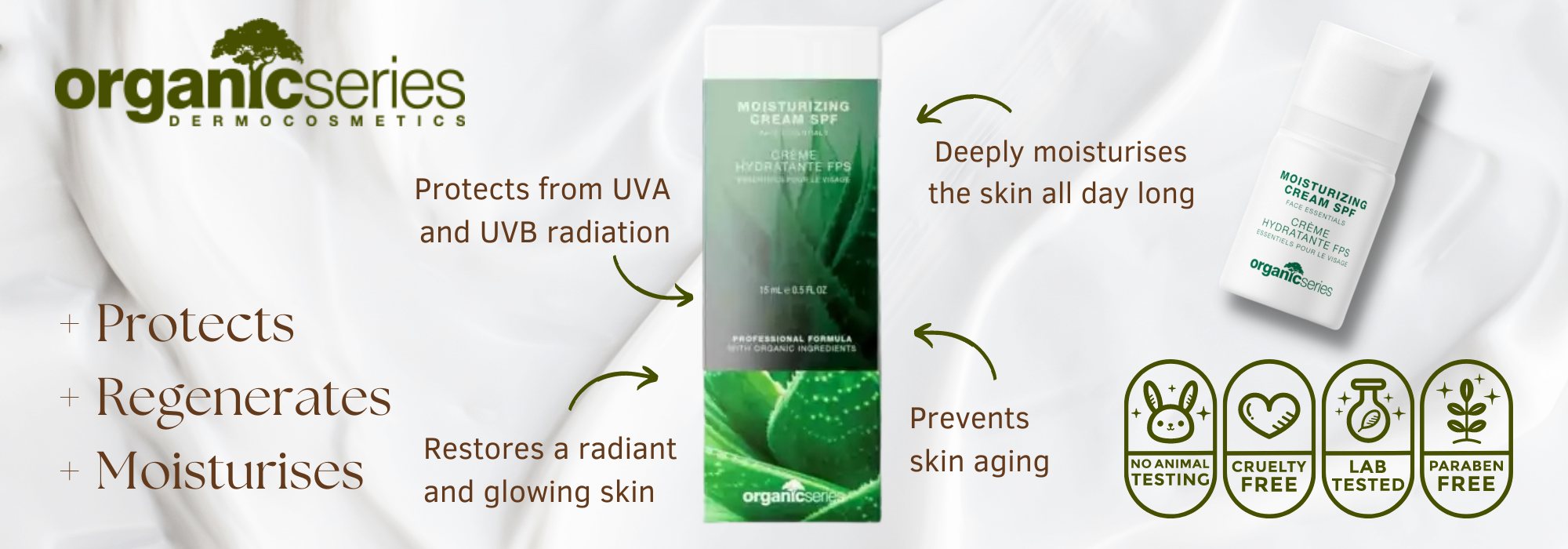
You will be able to keep your oily skin in check by following this simple professional skincare routine:
Wash your face with the Optimal Facial Cleanser, exfoliate with the Enzymatic AHA Gel, follow up with the Oil-Control Serum or Acne Control Serum and finish off with the Acne Control Cream or the SPF40 Moisturising Cream.
Once or twice a week do a facial with the Zinc Algae Mask or the Green Clay Mask – for best results, use one of the abovementioned serums before applying the mask.
Oily skin will also benefit greatly from regular acid treatments – our Mandelic+Glycolic Acid Peel is here to take care of your oily skin!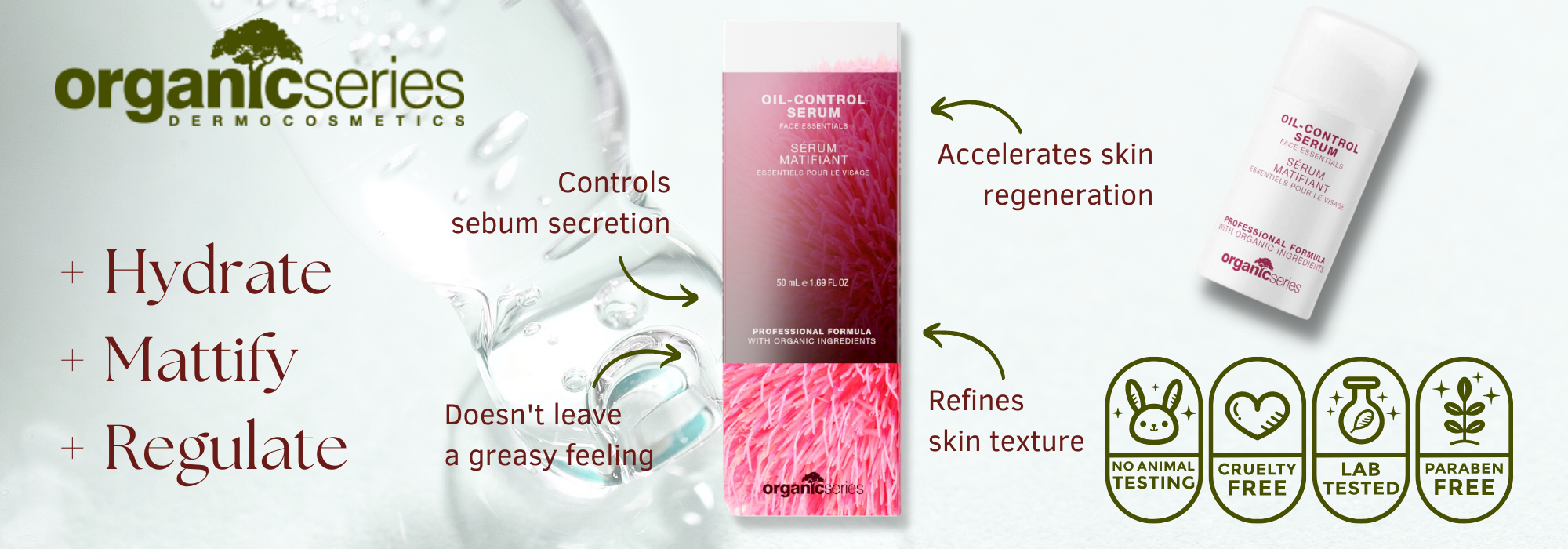
To take the best care of your dry skin follow this regimen:
Wash your skin with the Optimal Facial Cleanser, tone it with the Enzymatic AHA Toner, add some extra moisture with the Intensive Moisture Serum or the Hyaluronic Acid 2-in-1 and lock in the hydration by applying the SPF20 Moisturising Cream.
Once a week you should give your skin some extra love by performing a skin hydrating ritual – applying the moisturising serum and layering it with the Argan Oil Algae Mask for enhanced moisture absorption.
One more pro tip – for the night-time routine you can swap the SPF Cream for the Hydro-Control Lipo Cream to boost the skin lipid layers and make sure you wake up with a glowing and perfectly moisturised skin! It’s the perfect alternative to petroleum slugging, with a much lower risk of pores clogging and a much better impact on the environment!!!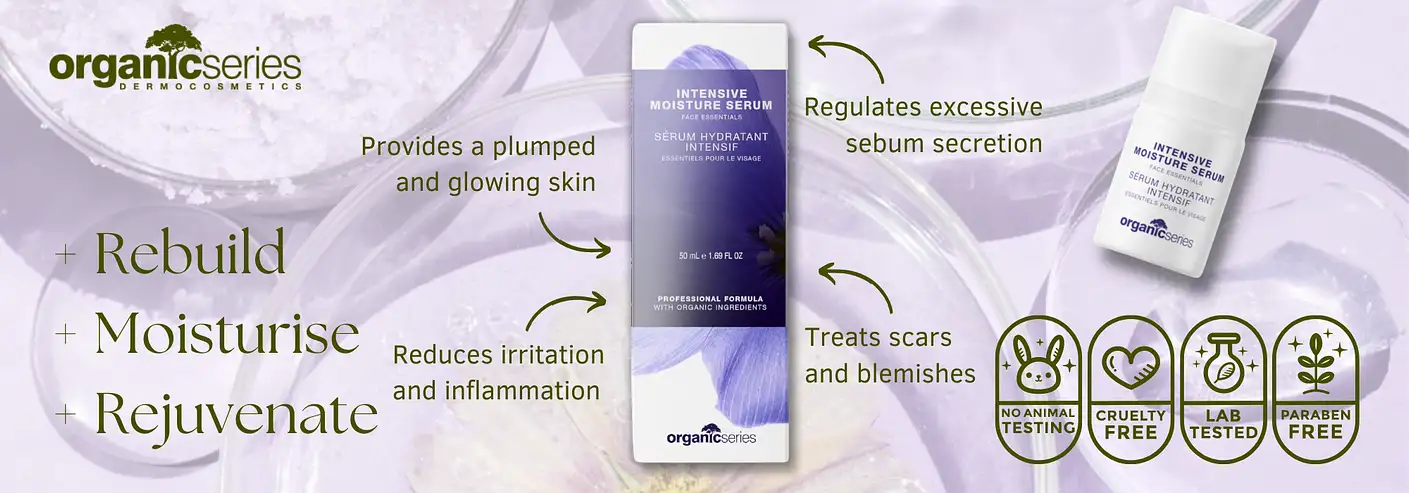
People with combination skin often need to combine more products in their skincare routine.
Battling excessive oiliness in some parts of the face AND excessive dryness in other parts of the face can be really difficult and annoying. But it can be really easy to manage combination skin if you follow a few simple rules:
It’s usually okay to use one type of a moisturiser (for example our SPF20 Moisturising Cream) for the whole face but it’s best to use two different serums before the cream – a moisturising serum for all the dry places and an oil-control serum for all the oily parts of the face. Don’t forget to properly cleanse your skin every day.
Pro tip – combination skin loves our algae masks! These are able to regulate the oiliness while providing hydration to dry skin as well. Our Aloe Vera Algae Mask might be the ideal choice for your combination skin!
Sensitive skin calls for sensitive care and Organic Series knows all about this!
We have a range of Anti-Redness products that are designed to soothe all irritations and calm the skin.
Start off with our super gentle Micellar Cleansing Water, then use the Anti Redness Serum coupled with the Micronized Booster Silver and layer it up with the Anti Redness Cream Forte.
Every once in a while use the Soothing Cream Mask for some extra skin soothing and nourishing.
And never leave the house without sun protection, sensitive skin is very prone to sun damage so you should always apply high quality facial sunscreen, for example our SPF40 Moisturising Cream.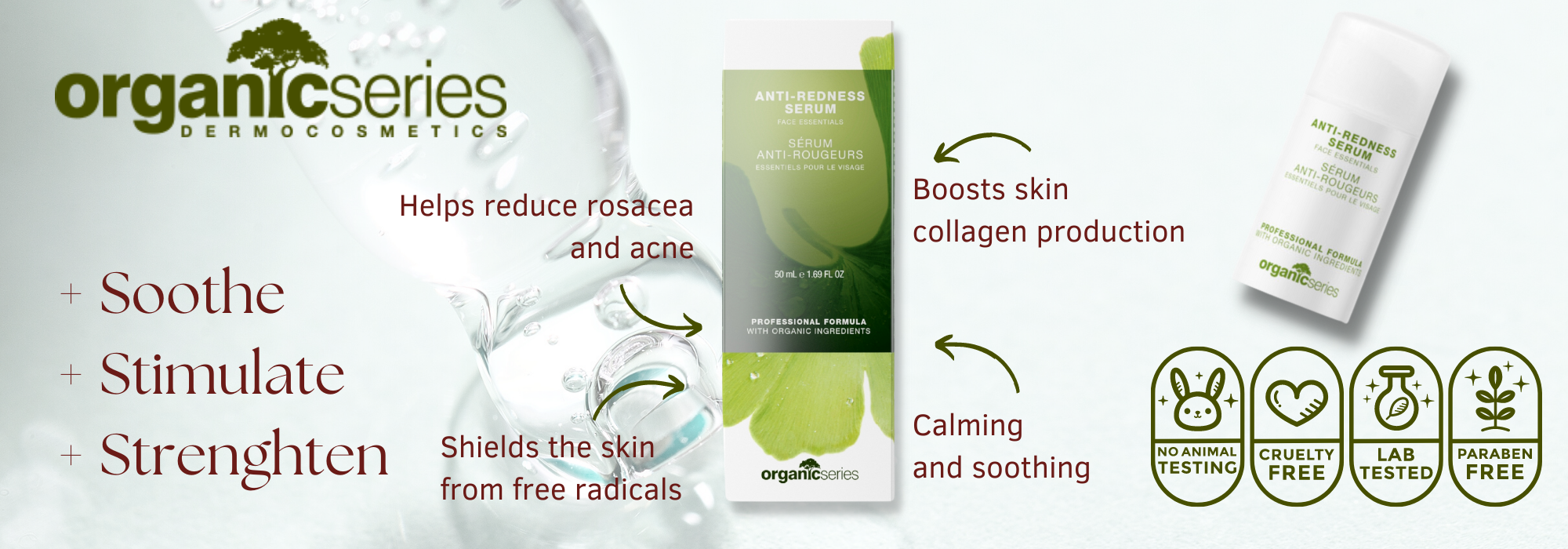
More inspiration
Follow Organic Series UK on instagram and facebook for more inspiration, expert tips and special discount codes!
Skincare for Skin Types By Organic Series
-
Face Moisturiser with Sunscreen SPF20 | Moisturising Cream SPF20 By Organic Series | 15ml, 50ml, 200ml
From £ 12.00Rated 4.89 out of 509 reviews -
Face Moisturiser with Sunscreen SPF40 | Moisturising Cream SPF High Protection By Organic Series | 15ml, 50ml
From £ 12.00Rated 4.67 out of 506 reviews -
Oil Control Serum | By Organic Series | 15ml, 50ml, 200ml
FromRated 4.80 out of 505 reviews£ 15.00Original price was: £ 15.00.£ 12.00Current price is: £ 12.00. -
-
Organic Facial Cleanser | Optimal Facial Cleanser By Organic Series | 50ml, 200ml
From £ 24.00Rated 5.00 out of 505 reviews

Maria
Cosmetic Chemist
Maria
All Author Posts

